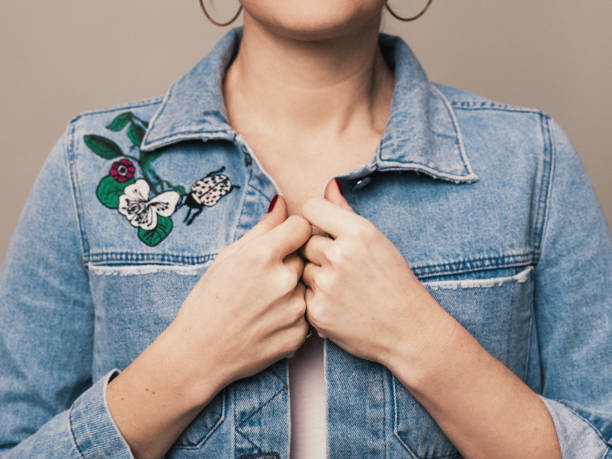Houston, a city renowned for its dynamic blend of cultures and rapid technological advancements, also harbors a deep appreciation for traditional crafts. Among these, embroidery stands out as both an artistic endeavor and a testament to the city’s cultural diversity. This intricate art form, with roots tracing back thousands of years, has found a vibrant and evolving community in Houston.
A Rich Historical Tapestry
Embroidery, the craft of decorating fabric with needle and thread, has been practiced across various cultures worldwide. From the elaborate silk embroideries of ancient China to the detailed needlework of medieval Europe, this art form has served as a medium for storytelling, religious expression, and personal adornment. In Houston, the tradition of embroidery has been enriched by the influx of diverse communities, each bringing their unique styles and techniques.
Cultural Influences and Styles
Houston’s multicultural landscape is reflected in the wide array of embroidery styles practiced within the city. Mexican embroidery, with its vibrant colors and floral motifs, is prominently featured, particularly Embroidery houston neighborhoods with strong Hispanic influences. These designs often incorporate symbols and patterns that hold significant cultural meanings, such as the iconic “Otomi” patterns characterized by their whimsical animal and plant depictions.
Similarly, the city’s Vietnamese community contributes with intricate silk embroidery, known for its delicate and precise stitches that create stunningly detailed images, often depicting scenes from nature and folklore. Indian embroidery styles like Zardozi and Phulkari have also made their mark, showcasing metallic threads and richly textured designs that are used in both traditional garments and contemporary fashion.
Local Artisans and Their Craft
Houston is home to numerous artisans who have dedicated their lives to mastering the craft of embroidery. These individuals often operate small businesses, offering custom designs and personalized pieces that range from monogrammed linens to elaborate wall hangings. Workshops and classes are commonly held throughout the city, providing opportunities for both novices and experienced embroiderers to learn and refine their skills.
One notable example is the Houston Embroidery Guild, a community organization that brings together enthusiasts of all skill levels. The guild offers regular meetings, workshops, and exhibitions, fostering a sense of camaraderie and shared learning. Through such initiatives, the guild not only preserves traditional techniques but also encourages innovation and contemporary applications of embroidery.
Embroidery in Modern Fashion and Art
In recent years, embroidery has transcended its traditional boundaries, finding new expression in modern fashion and art. Houston’s fashion designers are increasingly incorporating embroidered elements into their creations, blending traditional craftsmanship with contemporary aesthetics. This fusion is evident in the collections showcased during the city’s fashion events, where embroidered details add a touch of elegance and individuality to modern garments.
Local artists are also pushing the boundaries of embroidery, using it as a medium for contemporary art. These creators employ embroidery to craft intricate artworks that address various themes, from personal identity to social and political issues. The tactile nature of embroidery, combined with its visual richness, allows for a unique form of artistic expression that resonates with diverse audiences.
Sustaining the Craft
The sustainability of embroidery as a craft in Houston depends on the continuous transmission of skills and knowledge. Community centers, cultural festivals, and educational institutions play crucial roles in this endeavor. By offering courses and promoting public appreciation of the art form, these entities ensure that embroidery remains a vibrant part of Houston’s cultural fabric.
Additionally, the integration of technology with traditional techniques is opening new avenues for embroidery. Digital embroidery machines and software allow for the creation of complex designs with precision and efficiency, making the craft accessible to a broader audience. However, the essence of hand embroidery, with its personal touch and unique imperfections, continues to hold a special place in the hearts of many artisans and enthusiasts.
Conclusion
Embroidery in Houston is more than just a craft; it is a living tradition that bridges past and present, connecting people across cultures and generations. The city’s rich tapestry of embroidered art, from traditional techniques to modern interpretations, reflects its dynamic cultural landscape. As Houston continues to grow and evolve, so too will its embroidery scene, weaving new stories into the fabric of the city. Whether through the hands of skilled artisans or the innovation of contemporary artists, the art of embroidery in Houston remains a vibrant and cherished tradition.
Il posto migliore per acquistare orologi replica Rolex economici. E la migliore replica Rolex di grado 1 aaa+ fabbricata in Svizzera sul nostro sito Web con spedizione veloce.
alewatches.com website sells the best replica watches worldwide, and you can get top quality fake watches at a cheaper price.
Achetez des montres Rolex super clones parfaites bon marché sur le site repliquesdemontres.is. Nous proposons une fausse Rolex à mouvement suisse 1: 1 à bas prix.
